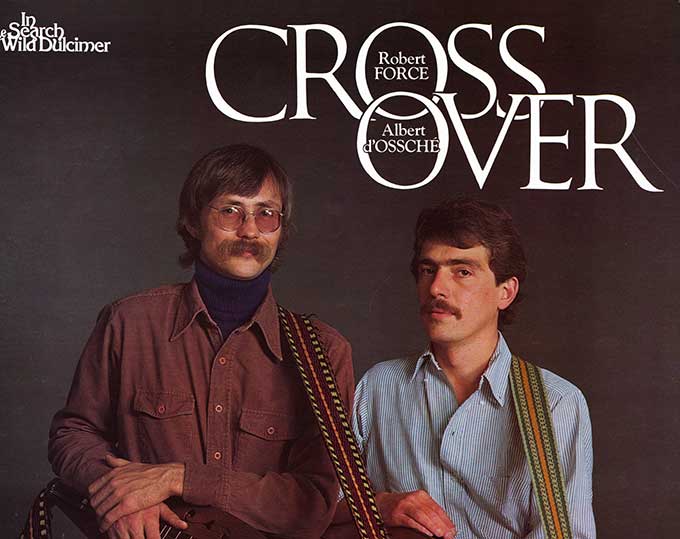Crossover Kicking Mule Records KM 308
Crossover is a music industry term that means what it implies-- that music has left one genre (for us, folk) and crossed over into another. (Pop, we hoped!) We also wanted to prove-- ever the evangelists-- that the dulcimer itself was a crossover instrument capable of playing in many styles and ethnic cultures. This album, recorded in Seattle at Kaye-Smith Studios in 1978 was Albert's and my first collaborative effort as a duo. By then we had been performing and writing together for seven years. We had the successful Pacific Rim Project album and two books. It was time to record our own stuff.

We had just finished a presentation for Dr. Fred Lieberman's class in the ethno-musicology department at the University of Washington. He came up to us one day after a performance at the Seattle Folklore Society and told us he had been sending his students to see us for years. We were perfect examples of traditional musicians. That stunned both of us. We asked him how that could be? He informed us there are two definitions of tradition-- one perpetuated generation to generation and one that is new and attracts others to emulate. Our stand-up, overhand style and world music put us in that latter category.
At the University we met two musical masters who were also lecture/guest performers. Guruvayur Dorai was from India and played the mridangam, a tabla-like drum with two opposing heads on a single body. Zimbabwean master, Dumi Mariare, played the African marimba. We immediately invited them into the studio for our upcoming sessions.
The production we put into the hands of Bill Tootell, a long-time friend from my Jefferson Airplane, Grateful Dead, Fat Jack rock and roll days. He brought a number of jazz-oriented musicians to sit in on the sessions. Many talented artists came in to work, including the non-touring sibling of the popular Heart Sisters, Linda (Wilson) Ring, singing back up. In the studio next door, Aerosmith was recording and stopped by, especially when Dorai was transfixing everyone with his intricate hand drumming.
Recording was expensive and it was all cash up front. My grandmother had left me $5,000, a heady sum in those days. Albert matched it by selling some of the Disney stock his grandmother gave him. As the saying goes, we were all in. We threw everything we could into the recording from steel drums to sax-cello to electric guitar. In long overdue retrospect, we reached further than the then current market was ready for. Too much Rock for Folk. Too much Folk for Rock. Niche-less in Seattle.
We selected Bruce Kaplan of Flying Fish Records as the person most likely to be interested in our music. He came to my house in Port Townsend after a trip to the Vancouver Folk Festival. We pitched him. He liked it and asked what we wanted. We said $7500. (We still thought music was supposed to pay you, not the other way around-- pay to play!) After not hearing from him after a month we took it to ED Denson of Kicking Mule Records in Berkley.
An acoustic guitar label, ED was still willing to take a chance on this “dulcimer thing”. As for the rock and roll part, he had been Country Joe and the Fish's manager so although we were a departure from guitars and traditional folk, we hadn't gone so far around the corner as to be out of sight. The Kicking Mule logo claims, “It's easy to be easy when you're easy.” He and his wife, Mary Alice, lived that philosophy. After ED sold KM, he became the best marijuana defense attorney in Humboldt County.
The “dulcimer thing” worked out well. Over the next seven years KM released more than half of all the albums featuring dulcimer in the country, including two more of ours. Every artist on the Pacific Rim Project had at least one release. Many others also got their start with Kicking Mule Records.
The album's Irving Penn-style photo was taken by Fred Stimson. Drew Elicker designed the layout.
